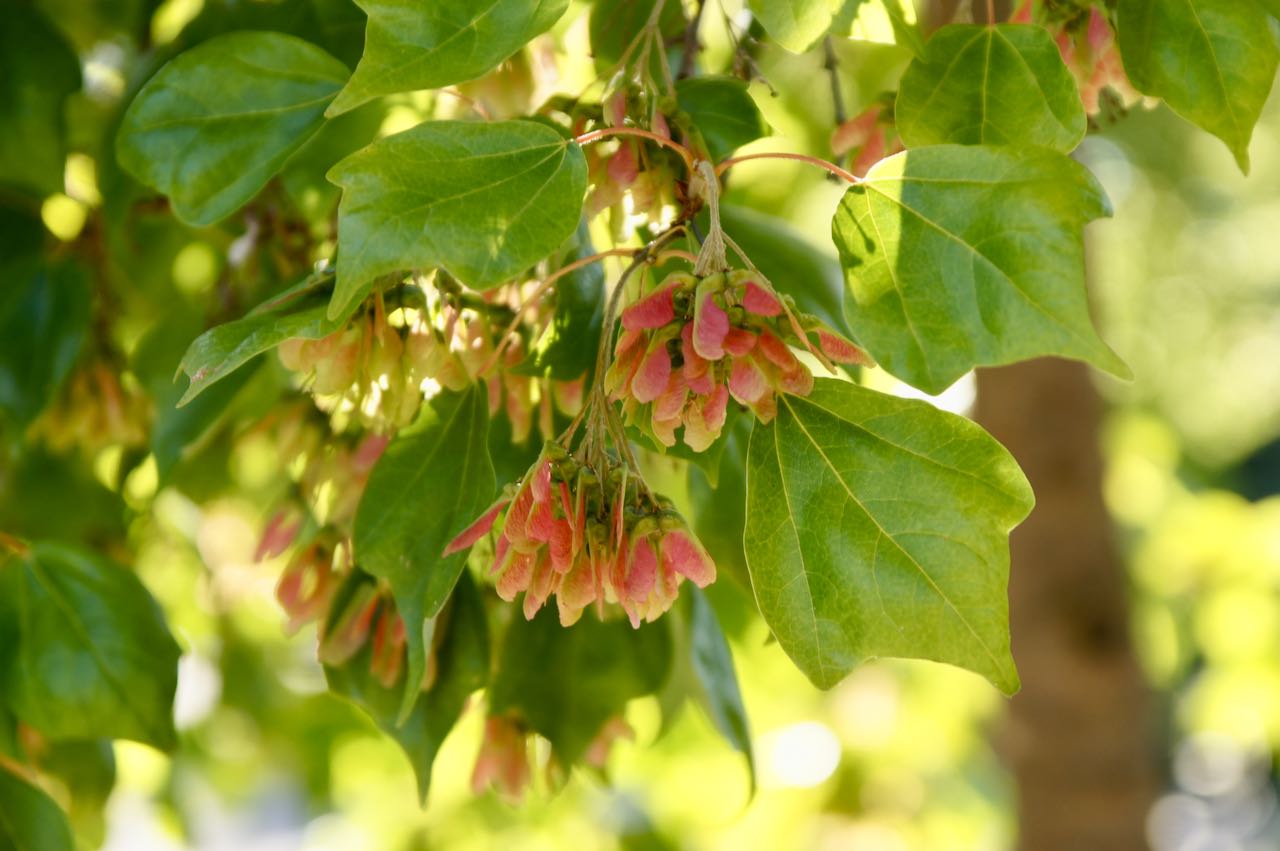Acer buergerianum
 trident maple
trident maple
With its rather extreme form of maple leaf with three conspicuous veins and three lobes at the most, trident maple is readily identified. It is a rather small tree, suitable for restricted areas, but is also used as a street tree at Stanford. There is one on your left as you go into Wilbur Hall at the main entrance on Escondido Road, and considerable numbers are on Alvarado Row near San Francisco Court. They line Pearce Mitchell Place from Mayfield Avenue to unit 17.
Most maple leaves have five structural ribs spanned by a flimsy membrane to take care of respiration and photosynthesis; the winter leaf drop then results in a minimum of waste. The basswoods, liquidambars, maples, planes, tulip trees, and other North American families use the five-rib design, but it is an interesting question, discussed under Liquidambar styraciflua, why Florida and Texas have maintained a strategy adapted to northern Canada.
About this Entry: The main text of this entry is from the book Trees of Stanford and Environs, by Ronald Bracewell, published 2005. Family name updated from Aceraceae to Sapindaceae, specific epithet corrected from buergeranum to buergerianum Oct 2017 (SP).





